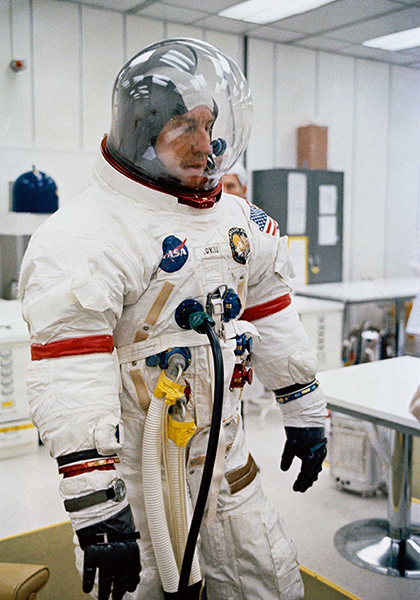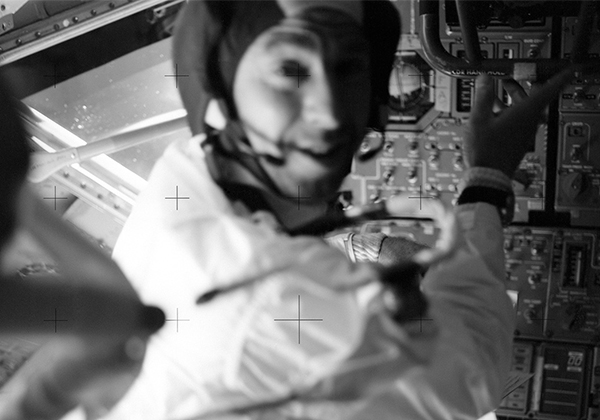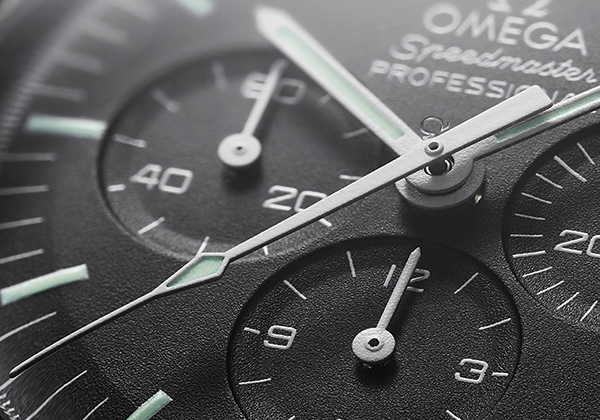Omega’s links to space exploration is no secret—one can hardly talk of the brand and not touch on the Speedmaster being the first watch on the Moon, worn on the wrists of US astronauts Buzz Aldrin and Neil Armstrong as they took one small step for man and one giant leap for mankind. Apollo 11 is a well-known story by now, so we’re going to focus today on another fated story of heroism and courage in space exploration, a show of human resilience timed down to the very second: Apollo 13—where the Omega Speedmaster arguably played a more crucial role.

By 1970, NASA was almost a decade into its momentous quest into space—after the success of Apollo 11, they were readying its third mission to the Moon: Apollo 13, with Command Module Pilot Jack Swigert and Lunar Module Pilot Fred Haise, under the mission command of James Lovell. Each were equipped with an Omega Speedmaster Professional chronograph, the official watch of US astronauts and part of standard NASA equipment since 1965. While the Apollo missions were obviously equipped with digital timers, a mechanical watch was critical for backup—in space exploration, just as with any exploration, engineers always needed to have backup plans, and backup plans for those backup plans. As NASA engineer James Ragan, who tested the Omega Speedmaster in 1964 and qualified it, said: “(The watches) needed to be there if (the crew) had a problem.” And during the Apollo 13 mission, that backup plan proved to be the crew’s saving grace.

Two days after Apollo 13 lifted off on April 11th, 1970, a routine stir of an oxygen tank ignited a damaged insulation wire inside it, causing an explosion that vented the oxygen inside the service module, carrying the three astronauts. Without that oxygen, the crew had to transfer to the lunar module to conserve its remaining resources for re-entry back to Earth. Essentially, the main ship was sinking, so the crew of three transferred to the lifeboat—a lifeboat designed to support only two men. Directed by their command back in Houston, the mission changed from landing on the Moon to bringing back the crew safely.

To conserve energy and oxygen, the crew had to shut down everything that was non-essential—that meant limiting heat, the use of drinkable water and shutting down digital timers. Enter the Omega Speedmaster.

The explosion had caused the mission to drift off its course, meaning it would reenter Earth’s atmosphere at the wrong angle and essentially bounce back into space. To readjust the course of the craft, the crew had to burn fuel for 14 seconds—Lovell controlled the spacecraft’s readjustment with Swigert timing it using his Omega. Quite possible the longest 14 seconds of their lives. To their relief, and the relief of the many who were paying attention to the rescue mission back on Earth, the maneuver worked—Apollo 13 landed safely in the South Pacific Ocean 5 days, 22 hours, 54 minutes and 41 seconds after it had taken off. Few things are timed as precisely as this, but when it comes to life and death, every second counts.

So where does the famed Peanuts cartoon character Snoopy enter in all of this? NASA attributes each year the Silver Snoopy Awards, awarding those who have “contributed to flight safety and mission success”. A special honour, Snoopy was an apt choice to represent the inherent fortitude and optimistic spirit behind the quest for space exploration. After Apollo 13, Omega was awarded a Silver Snoopy Award—a sterling silver lapel pin depicting the cartoon beagle as an astronaut—as a show of gratitude for its essential contribution to the mission and space flight in general.

There have been many Speedmaster watches since, but one of our favourites here at WorldTempus has to be the one commemorating the 45th anniversary of Apollo 13—the steel Moonwatch Anniversary limited series. Its dial and bezel, in black and white as a nod to classic comic strips, features a Super-LumiNova Snoopy on the 9 o’clock subdial with a thought bubble stating “Failure is not an option”. Between 12 and 3 o’clock, the phrase “What could you do in 14 seconds?” is printed. Snoopy is also featured on the caseback, in the form of a 925 silver medallion, mounted on a silver plate covered in blue enamel and sprinkled in silver powder—so there, Snoopy looks as though he is floating in space.








